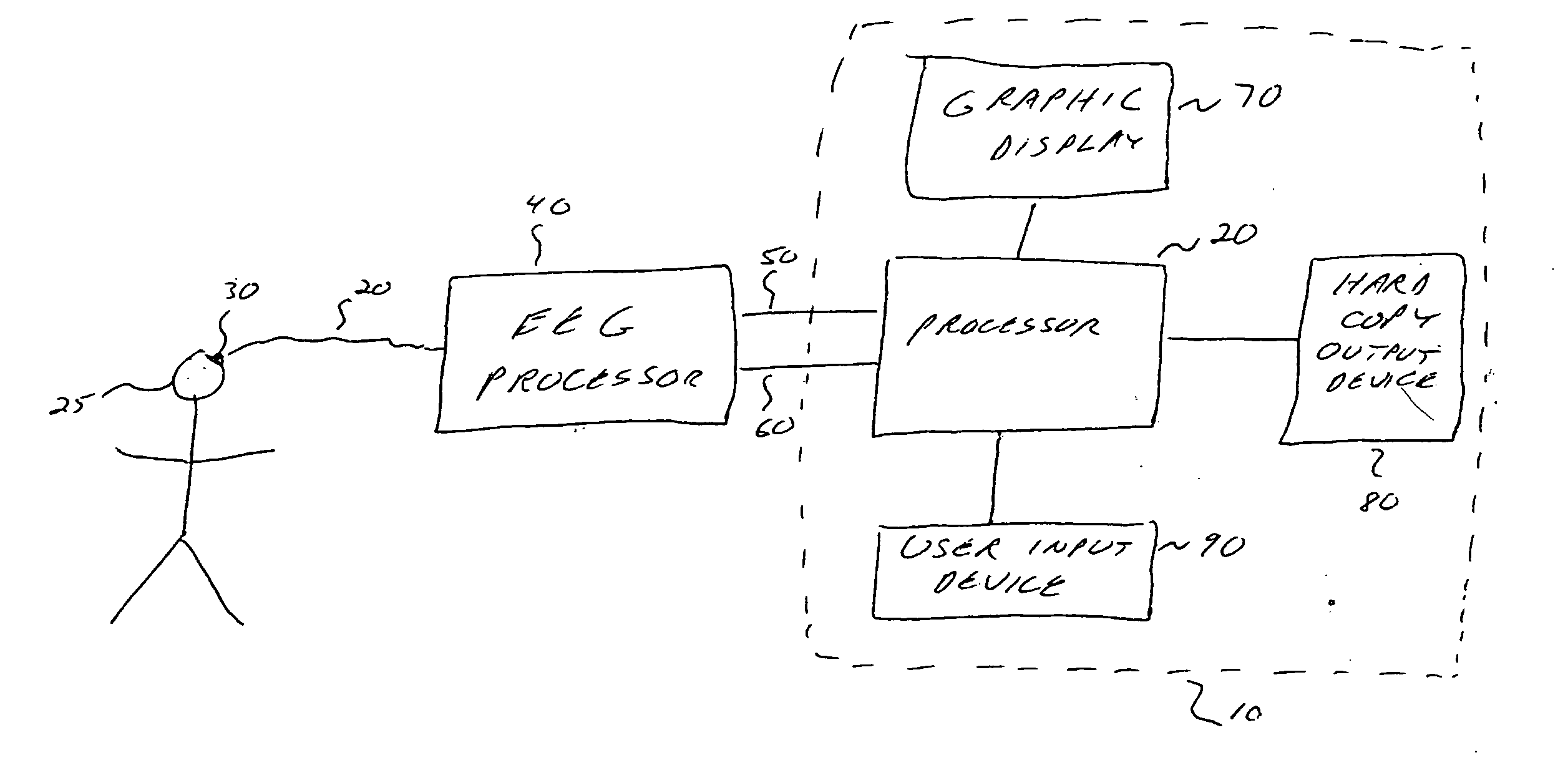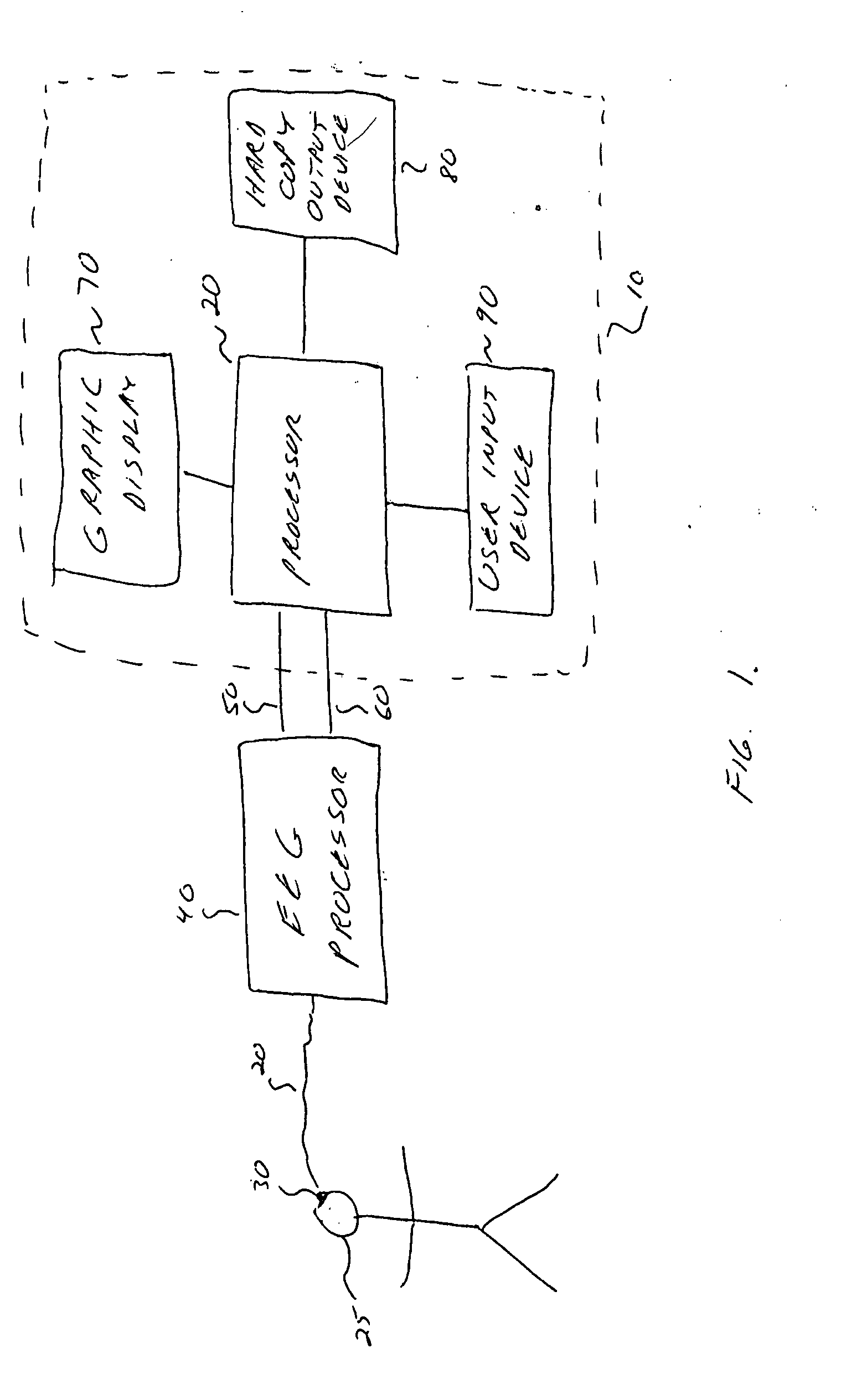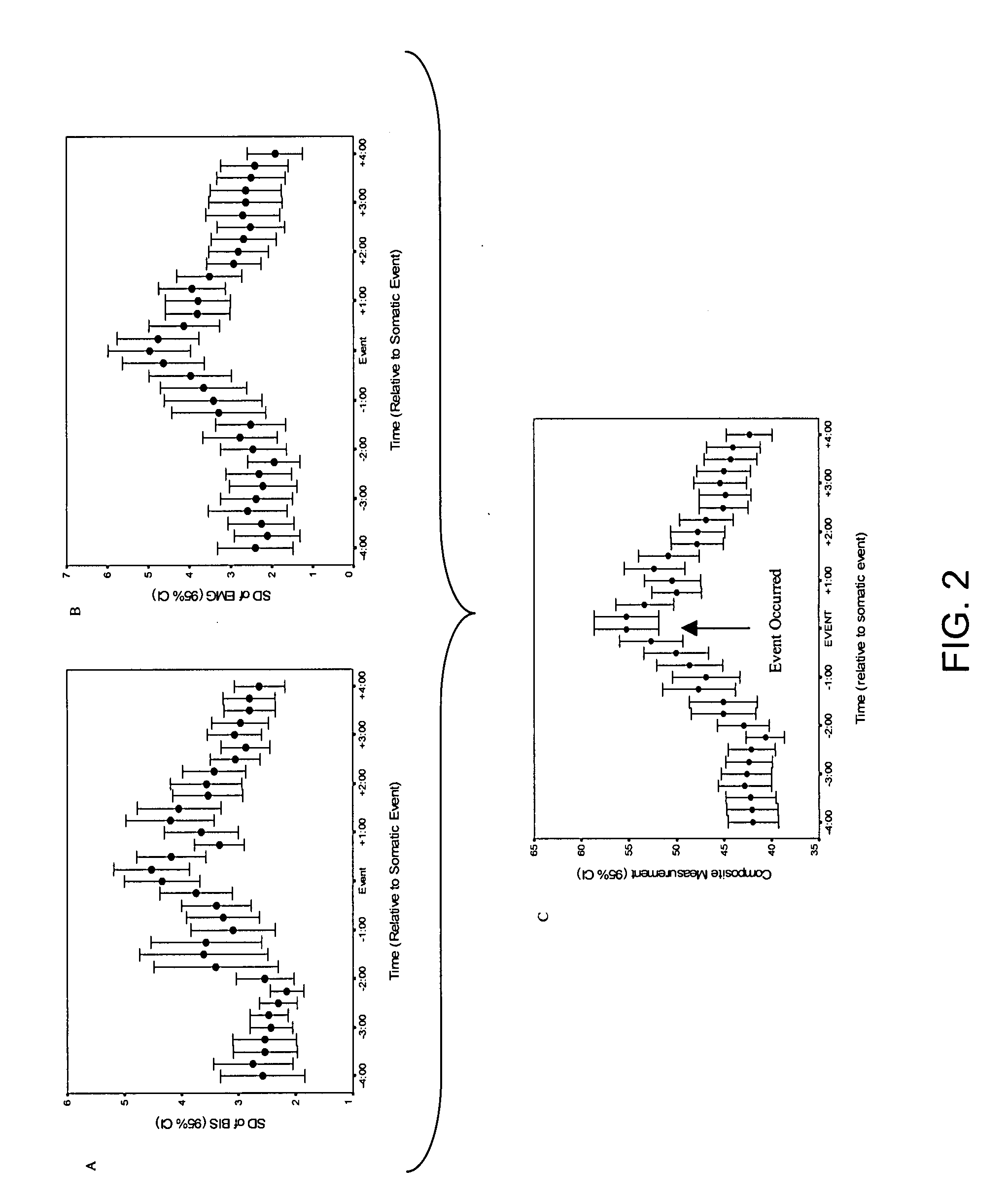System and method of assessing analgesic adequacy using biopotential variability
a biopotential variability and analgesic technology, applied in the field of medical monitoring tools, can solve the problems of all anesthetic agents having deleterious effects, increasing the anesthetic effect, and complicated anesthetic administration
- Summary
- Abstract
- Description
- Claims
- Application Information
AI Technical Summary
Problems solved by technology
Method used
Image
Examples
Embodiment Construction
[0027] The present invention uses changes in the intrinsic variability of a measure of a patient's consciousness during surgery to assess the patient's analgesic state and adequacy. Due to the stochastic nature of the underlying electroencephalogram (EEG), an EEG-based consciousness measure will exhibit a basal level of variability. This variability may be quantified with common variability measures, such as the standard deviation.
[0028] A perturbation applied to the patient, such as a surgical stimulus, cutting with a scalpel or tugging on muscle tissue or internal organs will result in an increase in the basal variability of the consciousness measure and therefore a concomitant increase in the variability measure used to quantify the consciousness measure variability.
[0029] This behavior appears at all levels of consciousness, not only during surgery. A sleeping subject, while not under the influence of anesthetic pharmacological agents, still has a reduced level of consciousnes...
PUM
 Login to View More
Login to View More Abstract
Description
Claims
Application Information
 Login to View More
Login to View More - R&D
- Intellectual Property
- Life Sciences
- Materials
- Tech Scout
- Unparalleled Data Quality
- Higher Quality Content
- 60% Fewer Hallucinations
Browse by: Latest US Patents, China's latest patents, Technical Efficacy Thesaurus, Application Domain, Technology Topic, Popular Technical Reports.
© 2025 PatSnap. All rights reserved.Legal|Privacy policy|Modern Slavery Act Transparency Statement|Sitemap|About US| Contact US: help@patsnap.com



